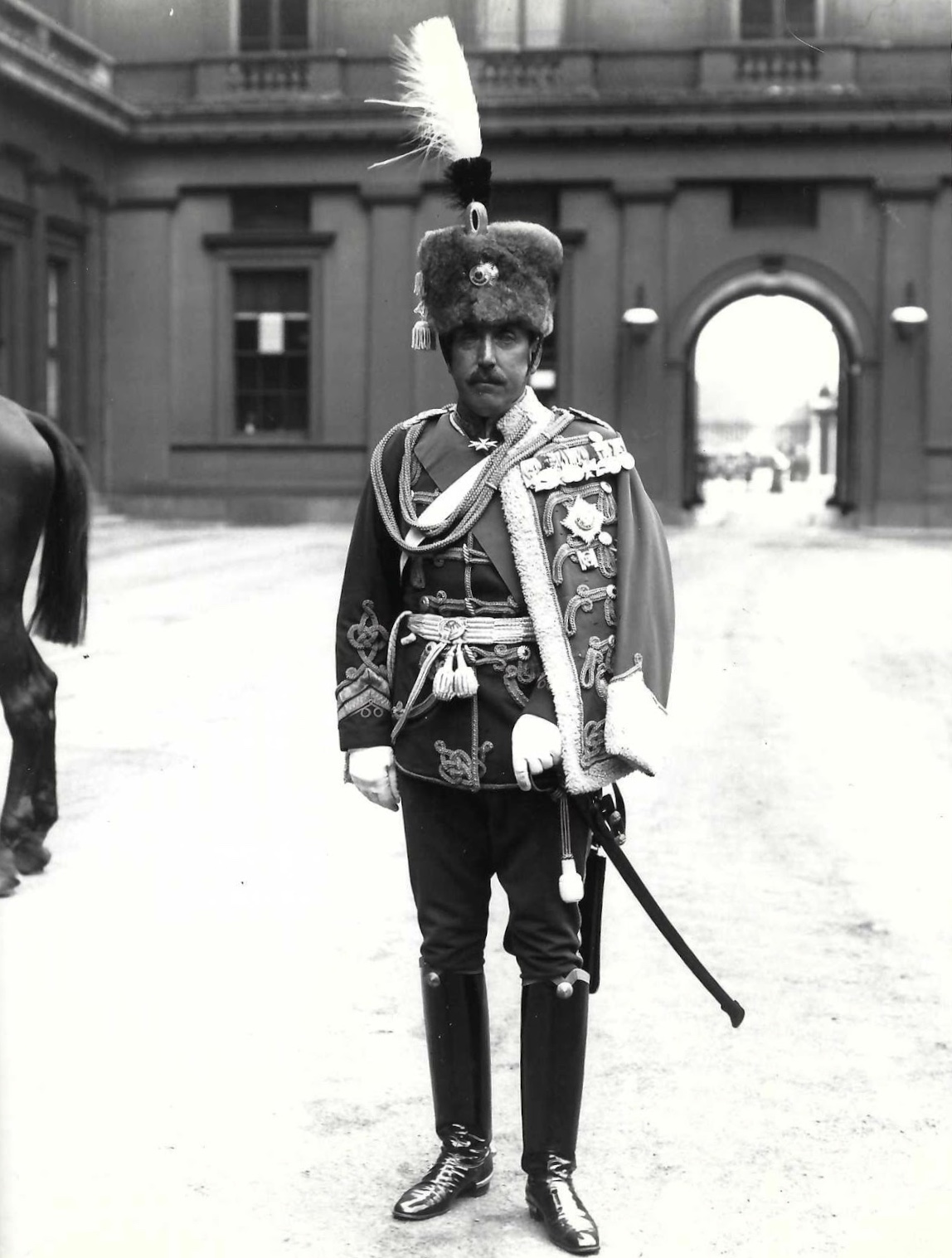by Scott Mehl © Unofficial Royalty 2015
Duchy of Schleswig-Holstein: In November 1863, Prince Friedrich of Schleswig-Holstein-Sonderburg-Augustenburg claimed the twin duchies as Friedrich VIII, Duke of Schleswig-Holstein after the death without a male heir of King Frederick VII of Denmark, who was also the Duke of Schleswig and the Duke of Holstein. In 1864, following the Second Schleswig War, the Duchy of Holstein and the Duchy of Schleswig became occupied territories of the German Confederation and two years later, following the Austro-Prussian War, part of the new Prussian Province of Schleswig-Holstein. However, Prussia recognized the head of the House of Oldenburg as the *mediatized duke of these two duchies, with the rank and all the titles. The Duchy of Schleswig and the Duchy of Holstein are now the German state of Schleswig-Holstein.
*mediatize – to annex (a principality) to another state, while allowing certain rights to its former sovereign
*********************

source: Wikipedia
Prince Albert, Duke of Schleswig-Holstein
Prince Albert, Duke of Schleswig-Holstein (Albert John Charles Frederick Arthur George) was the second son of Princess Helena of the United Kingdom and Prince Christian of Schleswig-Holstein. He was born on February 26, 1869, at Frogmore House in Windsor, England.
He was christened Albert John Charles Frederick Arthur George in the Private Chapel at Windsor Castle on March 31, 1869. His godparents were:
- Caroline Amalie, Dowager Queen of Denmark (his paternal great-aunt, born Caroline Amalie of Schleswig-Holstein-Sonderburg-Augustenburg)
- The Princess of Wales (his maternal aunt by marriage, born Princess Alexandra of Denmark)
- Princess Alice, Princess Ludwig of Hesse and by Rhine (his maternal aunt)
- Prince Alfred, Duke of Edinburgh (his maternal uncle)
- Friedrich VIII, Duke of Schleswig-Holstein (his paternal uncle)
- Johann, King of Saxony
- Prince George, Duke of Cambridge (his first cousin twice removed)
Albert had four siblings:
- Prince Christian Victor (1867-1900) – unmarried, no issue
- Princess Helena Victoria (1870-1948) – unmarried, no issue
- Princess Marie Louise (1872-1956) – married Prince Aribert of Anhalt (marriage dissolved), no issue
- Prince Harald (1876-1876) – lived just 8 days

Princess Helena with her sons Christian Victor (l) and Albert (r), c. 1875. source: National Portrait Gallery; half-plate glass negative, by Alexander Bassano (NPG x95876)
Like his elder brother Christian Victor, Albert attended Lambrook and was destined for a military career. However, unlike his brother, Albert joined the Prussian Army, eventually reaching the rank of Lieutenant Colonel. This meant that Albert was separated from his family during World War I. Having refused to fight against the British, Albert’s cousin, Wilhelm II, German Emperor and King of Prussia, excused him from active service, and he spent the war years serving on the staff of the Governor of Berlin.
By the end of the war, Albert was the heir apparent to his childless cousin, the Duke of Schleswig-Holstein, a brother of the German Empress Augusta Viktoria. He succeeded to the Dukedom in 1921, also becoming head of the House of Schleswig-Holstein-Sonderburg-Augustenburg. The title was merely in pretense, as the Duchies of Schleswig and Holstein had been annexed by Prussia following the Austro-Prussian War in 1866.
Albert never married, but just before his death, he acknowledged an illegitimate daughter born in 1900. The child, Valerie Marie, had quickly been given up and was raised by a Jewish family. Albert wrote to her just weeks before he passed away, acknowledging that he was her father. He also informed his two sisters, although he never disclosed the mother’s name to any of them. Some years later, when Valerie was planning to marry the Duke of Arenberg, this acknowledgment would become very important. At the time, because of her perceived Jewish heritage, she was not permitted to marry the Duke. Fortunately, Albert’s sisters attested to her true parentage, and the wedding was then permitted. Valerie died, by apparent suicide, in 1953.
Prince Albert, Duke of Schleswig-Holstein died on April 27, 1931, in Primkenau, Germany (now Przemków, Poland). He is buried near the church in Primkenau.
This article is the intellectual property of Unofficial Royalty and is NOT TO BE COPIED, EDITED, OR POSTED IN ANY FORM ON ANOTHER WEBSITE under any circumstances. It is permissible to use a link that directs to Unofficial Royalty.
Schleswig-Holstein Resources at Unofficial Royalty
